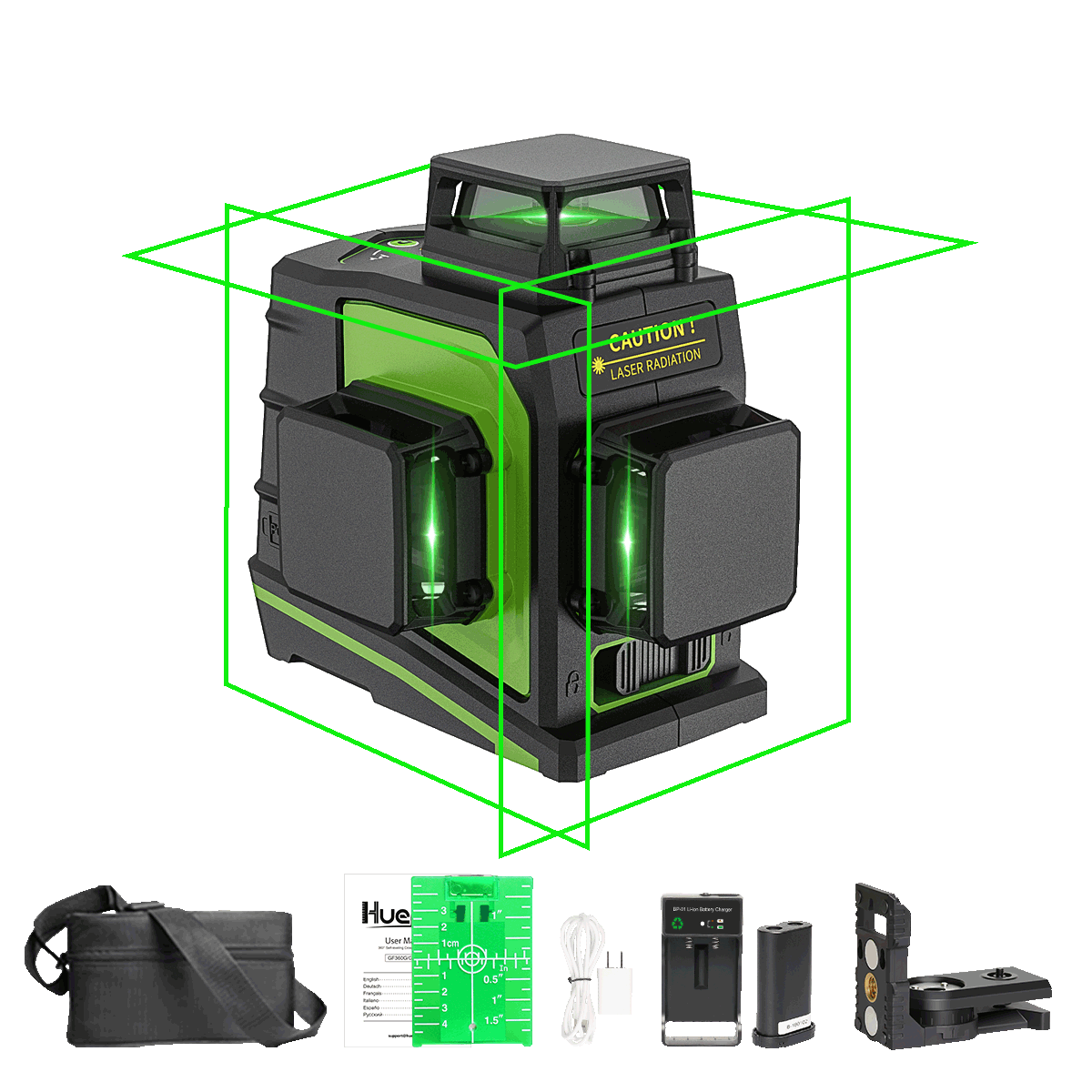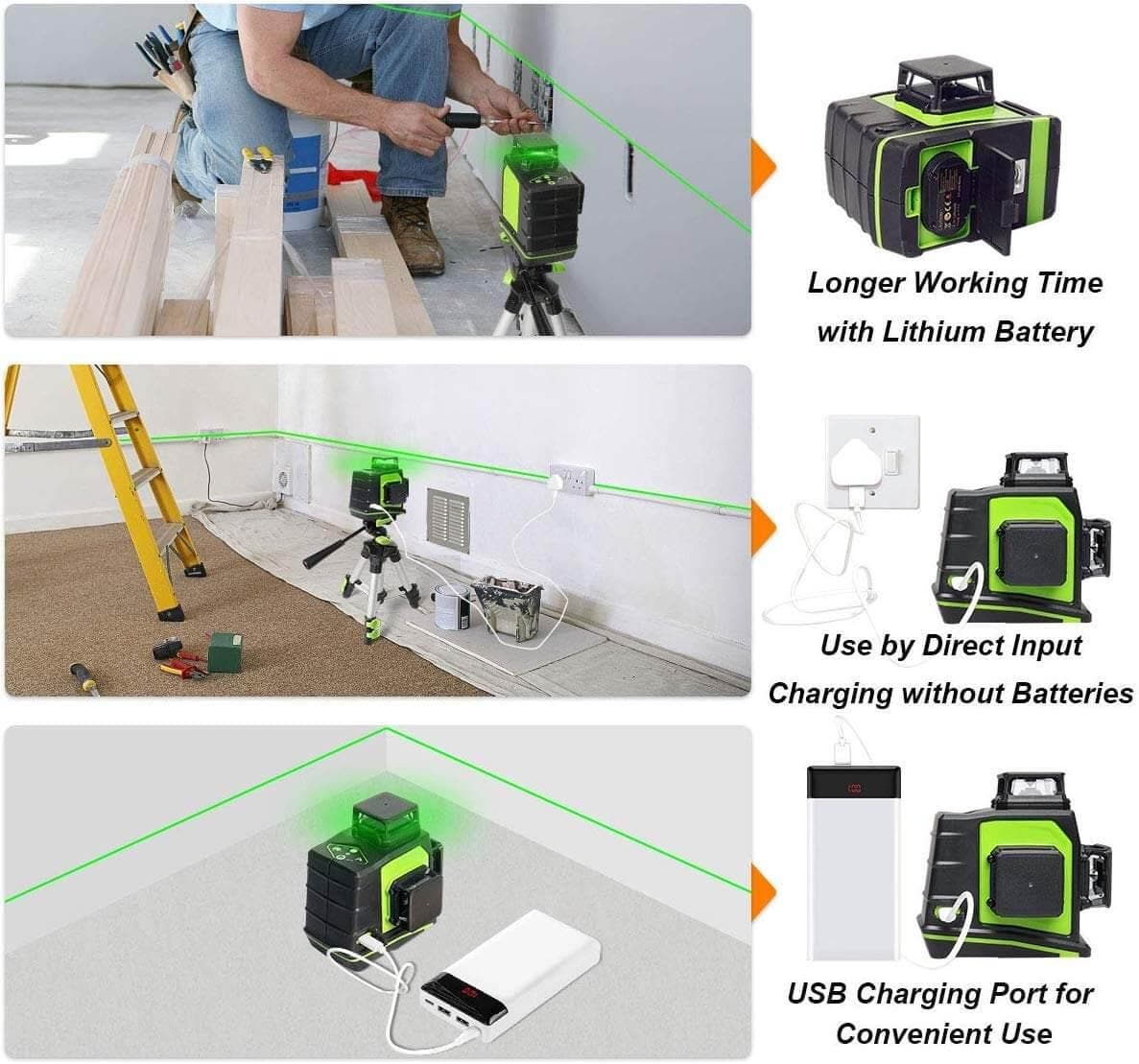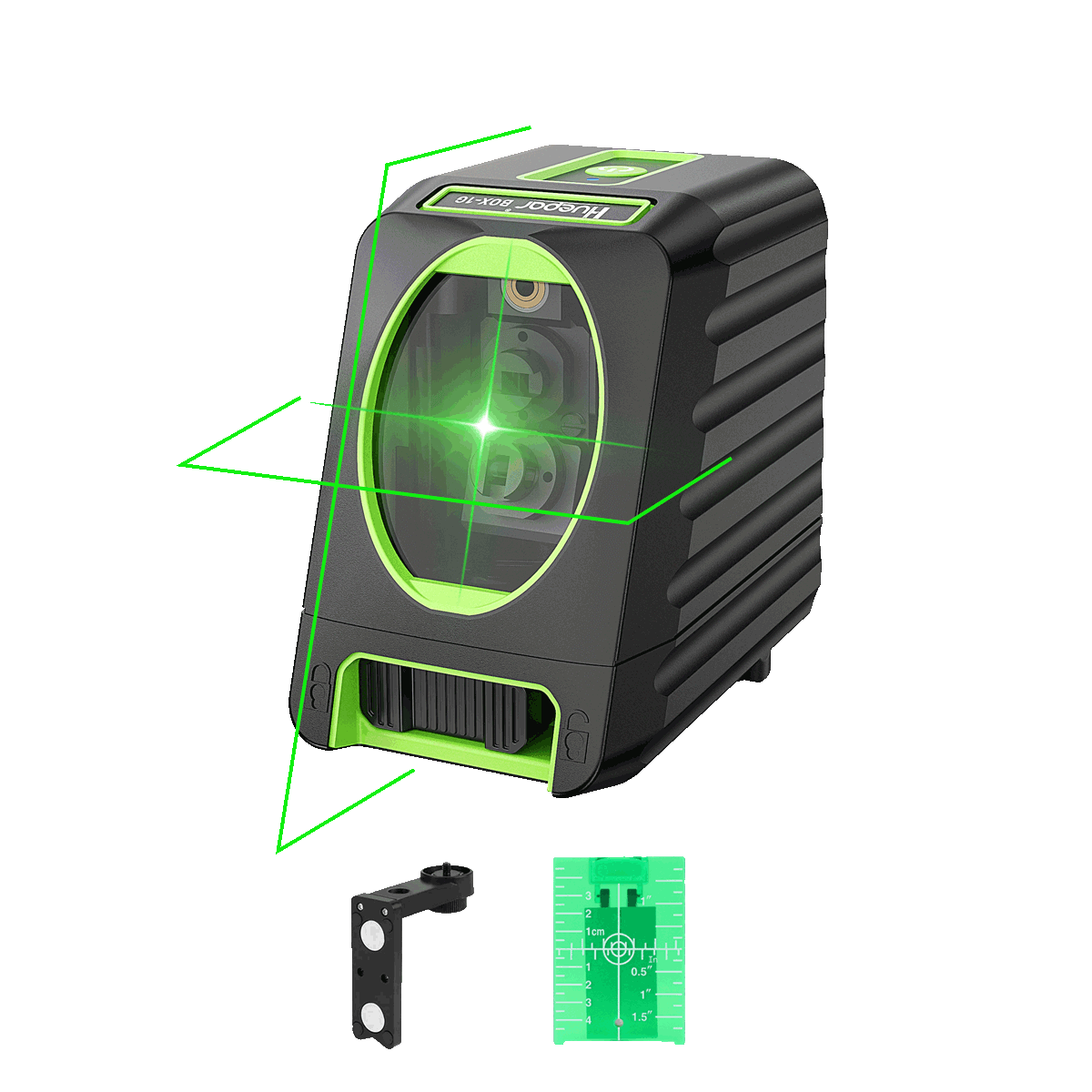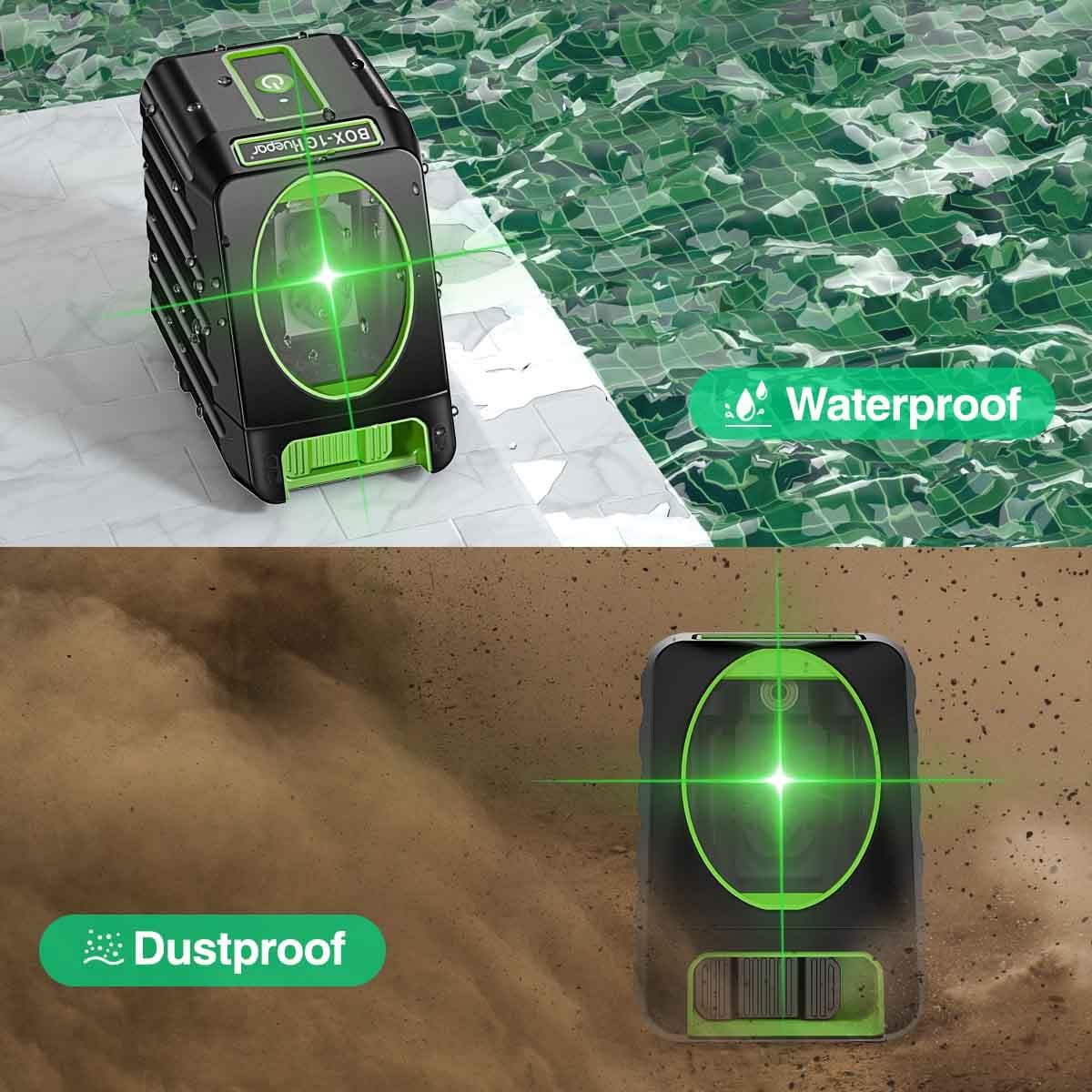
Do Laser Levels Need to Be Calibrated?
Laser levels have turned into an indispensable tool for construction professionals and DIYers alike. These ingenious devices project a precise, level reference line onto surfaces to ensure accurate measurements and alignment on various projects. In the world of construction and home improvement, where even slight deviations can result in very costly mistakes, the importance of laser levels cannot be stressed enough.

How Does a Laser Level Work?
Laser levels operate by emitting a concentrated beam of light that creates a visible, level line on the surface it is projected onto. This line serves as a reference point for aligning objects, checking for level surfaces, or transferring measurements across a room or job site. The key advantage of laser levels lies in their ability to provide a consistent, highly accurate reference line, eliminating the need for traditional leveling tools like spirit levels or plumb bobs.
Laser levels ensure that walls, floors, and ceilings, among other building elements, are correctly aligned during a construction project. They are irreplaceable in the processes of laying foundations, installing drywall, aligning cabinetry, and setting up tile or hardwood flooring. Laser levels give the contractor a reference line to work from, ensuring accurate measurements so that every aspect of the construction is level and square, making for a structurally sound and visually appealing final product.
Laser levels have become a game-changer for DIYers, making tasks that once were challenging and required a great deal of time very easy. Whether hanging pictures, installing shelves, or laying out a deck or patio, a laser level helps in achieving professional-looking results with minimal effort. Such tools have democratized precision in home improvement projects, enabling homeowners to tackle tasks with confidence and achieve exceptional outcomes.
The true value of laser levels, however, lies in their accuracy of measurement. A slight deviation from level can have very important ramifications: structure, misaligned components, unsatisfactory aesthetic results. Precise measurement taken ensures the integrity and quality of every construction and renovation project. Because of this, laser levels are becoming a very important tool for professionals and even DIYers alike.
Why Calibrate Laser Levels?
Definition of Calibration: Calibration is a procedure of adjusting or tuning a laser level in such a way that it projects correctly straight lines and planes. It aligns the internal components and makes the proper corrections in case of deviations from the intended specifications.
Factors Affecting Laser Level Accuracy: Even the most precise laser levels can gradually lose accuracy over time due to various factors:
-
Regular Use: Frequent use and constant vibrations can cause minor shifts in the internal mechanisms, leading to measurement inaccuracies.
-
Transportation: Moving the laser level from one job site to another, or even rough handling during transportation, can disrupt the delicate internal alignments.
-
Environmental Exposure: Extreme temperatures, humidity, and other environmental conditions can affect the laser level's performance and accuracy.
These factors cause the laser level to drift out of calibration over time. Calibration, in this regard, is done on a regular basis to cancel out these effects and maintain the precision of the tool.
Signs that Your Laser Level Needs Calibration
Inconsistent Lines
A well-calibrated laser level projects straight, leveled, and perfectly aligned lines. Inconsistencies in the projection of these lines may therefore indicate that something is not right with your laser level, which might actually need recalibration. Inconsistencies in lines may include wavy, curvilinear, or misaligned lines, showing the laser might have lost its accuracy.
Mismatched Measurements
When using a laser level, you often rely on aligning it with reference points or previously measured lines. If the laser level's projected lines do not match up with these reference points, it could be a clear indication of calibration issues. Misaligned measurements can lead to costly errors in construction or DIY projects.
Frequent Errors
If you consistently encounter errors or discrepancies in your projects when using the laser level, it may be time to consider calibration. These errors could manifest as misaligned surfaces, uneven installations, or measurements that don't add up. Frequent errors, even if seemingly minor, can compound over time and lead to significant problems.

Calibration Frequency
Like all precision instruments, laser levels need periodic recalibration to maintain their accuracy over time. The general rule of thumb is to have it calibrated annually; however, a number of factors can affect how often your laser level will need calibration.
-
Quality of the Laser Level: High-quality laser levels are constructed with more robust components and generally have better calibration stability. They may not need recalibration as often as lower-end models.
-
Frequency of Use: If you use your laser level frequently for various projects, it's more susceptible to wear and tear, which can affect its calibration. In such cases, more frequent calibrations (every 6 months or even quarterly) may be necessary.
-
Nature of Projects: The nature of the projects you are undertaking can also affect the frequency of calibration. If you are mostly dealing with larger-scale construction projects or require very accurate measurements, it is recommended that you calibrate your laser level more frequently.
-
Usage Conditions: Poor environmental conditions include extreme temperatures, moisture, and rough handling that will negatively impact your laser level calibration. In that case, it is better to go for immediate calibration when such exposure happens, instead of waiting a year after it was last calibrated.
While the annual calibration guideline is a good starting point, these factors have to be considered and the frequency adjusted accordingly. Many professionals go to the extent of having their laser levels calibrated every 6 months, considering how vital the tool is in their line of work.
Moreover, calibration of your laser level should be done right after any rough handling or impacts, such as dropping or even bumping against a hard surface. Even minor impacts can knock internal components responsible for accurate measurements and thus demand immediate calibration.
Calibration Process
Meanwhile, some laser levels come self-calibrating; instead, users are able to do the job themselves. For the sake of full accuracy and reliability, the ideal choice is professional calibration handled by certified technicians.
Normally, the calibration of laser levels involves the adjustment of their internal parts in detail for perfect alignment and providing of exact measurements. The know-how and specialized equipment the trained professionals have will facilitate them in carrying out the task skillfully.
Calibration of a laser level involves a series of tests and adjustments that are done to ensure the accuracy of this instrument for various orientations and distances. Any deviation or inconsistencies that might arise are identified and adjusted in minute detail to the laser diode, optics, and leveling mechanisms.
Calibration procedures should be carried out in accordance with the manufacturer's guidelines and user manuals. Many of these resources will have specific instructions on when and how to calibrate the laser level, along with any recommended intervals or conditions that may warrant calibration.

Benefits of Regular Laser Level Calibration
Regular calibration of laser levels offers several significant benefits that can greatly enhance the accuracy and efficiency of your projects:
Minimized Errors and Improved Accuracy
With time, even very accurate laser levels can slowly drift or shift due to regular use, transportation, and other environmental causes. Keeping your laser level calibrated on regular basis means you are reassuring that it keeps on maintaining good accuracy, minimizing chances of erroneous results and hence, variations in measurements.
Enhanced Work Quality and Efficiency
Precise measurements are very important in achieving high-quality results from construction, renovation, or any other DIY project. With a well-calibrated laser level, you will be sure of the accuracy of your measurements to work more confidently and faster. This could translate to better-finished projects with reduced rework, saving you both time and effort.
Increased Confidence in Measurements
Knowing that your laser level is calibrated and giving accurate measurements gives peace of mind and confidence in your work. This could be particularly important in critical projects where even the small mistake will have enormous implications, such as structural works or large-scale construction projects.
Potential Cost Savings in the Long Run
Although there might be some upfront cost for professional calibration services, this could most often be outweighed by the savings on the minimization of errors and rework. By assuring accuracy from the very beginning, one can avoid expensive mistakes and intensive corrections or repairs afterward.
Regular calibration is an essential aspect of maintaining the accuracy and reliability of your laser level. By prioritizing this maintenance, you can enhance the quality of your work, increase efficiency, and ultimately save time and money in the long run.
Conclusion: Ensuring Laser Level Accuracy
Calibrating your laser level regularly is essential to maintain its accuracy and reliability. Even the slightest misalignment or inconsistency can lead to costly errors and compromised work quality. By adhering to the recommended calibration schedule, whether annually or more frequently based on usage conditions, you can minimize the risk of measurement errors and maximize the efficiency of your projects.
Though there are self-calibrating laser levels, seeking expert services by qualified technicians is a way of giving the best results. Experts possess knowledge, equipment, and experience that will give the most extensive calibration for your laser level, so that it may conform to the specifications outlined by the manufacturer.
It is always important to refer to your laser level's user manual for any recommendations by the manufacturer regarding calibration frequency and procedures. These recommendations are specific to your model and take into consideration a number of factors that can affect it over time.
If you suspect your laser level has undergone rough handling or environmental extremes, you should have it calibrated immediately, even when it is not due for the regular calibration. Prompt attention to potential issues can prevent larger problems and maintain the integrity of your measurements.
Get Huepar Laser Levels Today!
















